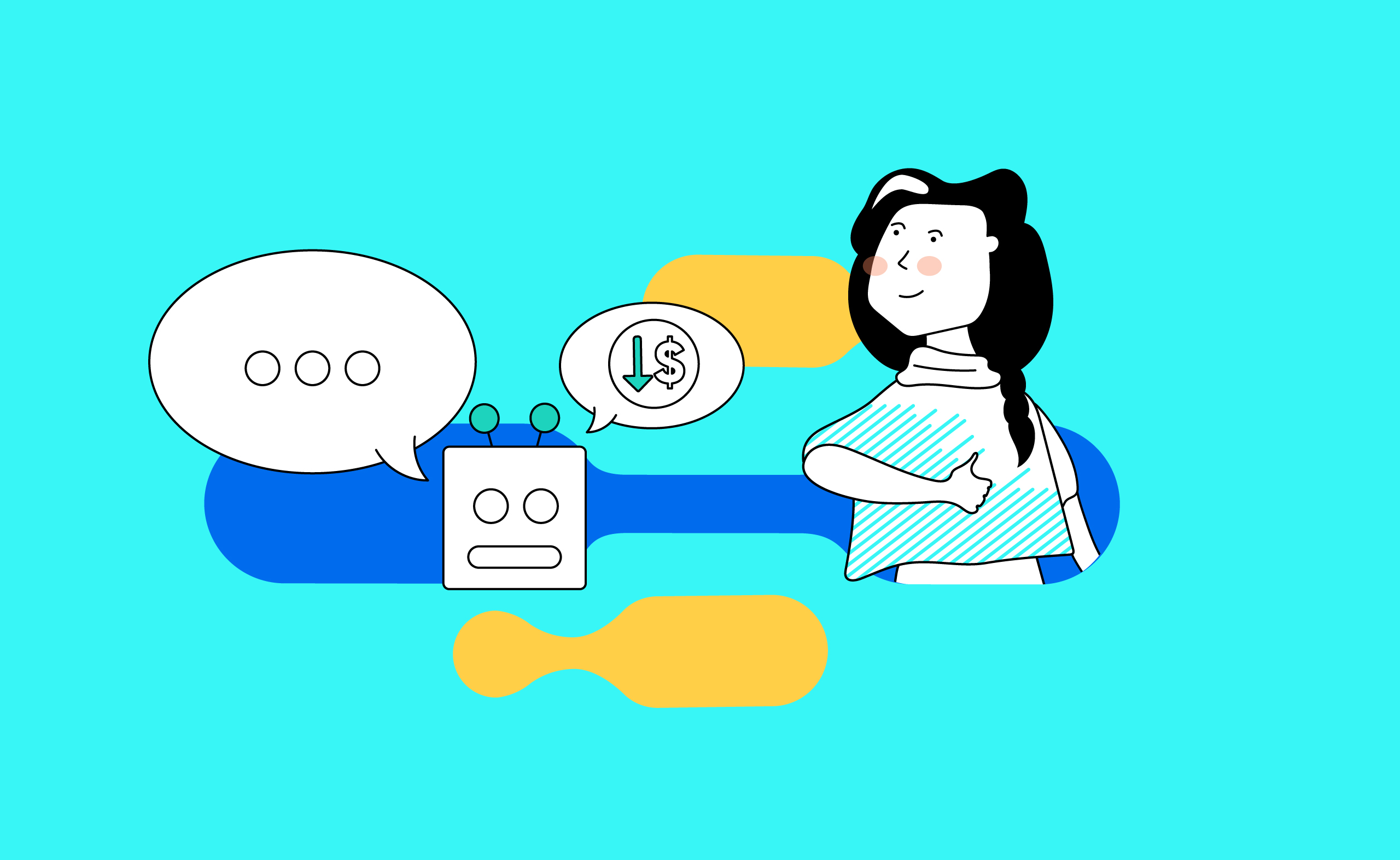Today, many organizations leverage chatbots, AI platforms, and automation to interact and personalize customer service agent interactions to improve the customer experience (CX) with faster resolution time.
According to a recent 2022 Gartner Magic Quadrant for Enterprise Conversational AI Platforms report, “The chatbot market has seen increased interest and rapid adoption over the last five years. During that time, the products and platforms enabling the building of chatbots have been extremely diverse and have evolved considerably.”
Technology has changed how we communicate, gather, and share information, which is no longer linear. With smartphones, wearables, and the Internet of Things (IoT), the flow of information is increasingly accessible and dynamic. Chatbots offer a way to aid customer support by giving the user a highly contextual, personalized, and seamless experience across multiple channels and devices from anywhere, in real-time, 24/7.
To best reflect the customers’ needs, organizations must offer easily configured, well-integrated, highly personalized experiences–Tailor Chatbots to the user’s interests, context, and behaviors. Ensuring scalable services is one of the most prominent challenges organizations face when providing real-time support to as many people as possible without increasing operating costs. With the use of chatbots, this goal is easily obtainable. Unlike human agents, where customer service and support training programs cost businesses upwards of over $1.3 trillion worldwide, chatbots reduce service costs by up to 30%, reducing operating expenses related to the volume of inquiries and decreasing resolution time by up to 90%.
Chatbots, the current state of technology, and future development
There are three strategic directions when it comes to chatbot technology:
- Natural-language-portfolio centric. These platforms provide multiple capabilities within the natural language technology (NLT) space, covering conversation and other capabilities like search, text analytics, natural language generation (NLG), translation, text summarization, knowledge graph integrations, and more.
- Business-automation centric. These platforms focus on various aspects of process automation (within a conversation workflow) that can support customer inquiries and surface catered business information that otherwise would require an employee’s assistance.
- User-experience centric. These platforms pivot on customer data and behavioral or psychographic models to deliver personalized experiences, including conversational AI, across a range of customer touchpoints.
In the recent past, the development of chatbots has been more focused on the IT user side and not on conversational AI platforms needed to automate interactions across the customer journey. We are rapidly moving beyond automating FAQ responses or deflecting escalations using technologies that integrate into the more extensive business tooling infrastructure and are more efficient overall. Organizations are now investing in the right solutions and functionality. Chatbots can create new and powerful customer experiences leading to more satisfied, engaged, and loyal customers.
How Does Groundswell Tackle Chat Bots?
A chatbot always starts with the customer in mind. Understanding the most common questions customers are asking unveils the scope of the chatbot. Whether it’s help finding a FAQ in an extensive knowledge base, or a status update on a request, we can configure the chatbox to support almost any inquiry in a natural and structured way.
Groundswell works with businesses to help understand their customer’s common questions through workshops and analyzing recent support cases and resolutions. The analysis helps the team build a customer’s persona. The workshops’ final outputs and analysis are a blueprint, or a flow, of how a customer will interact with a chatbot. The common questions and progression that may occur are broken down into dialog streams to form the framework of all the possible ways a chatbot could support a customer before requiring an employee to intervene.
After building out the dialog streams and testing the customer journey, “intents” are drafted to funnel similarly-worded questions back to the existing dialog paths. The intents work as inputs to the natural language processing to allow a bot to understand the customer’s conversation.
The final step is deployment and iteration. A chatbot is only as good as the team that supports it and its customers. When a customer begins exploring the bot, and new questions arise that do not have a dialog path, a chatbot can then deflect to an agent. However, the missing path must report to administrators and indicate that they may need to either expand the dialog options or create other intents to funnel the question back to an existing path.
How are Chatbots Being Used in Real-world Scenarios Today?
Today, we are seeing an increased number of industries embracing chatbots, such as banking, real estate, and retail organizations, with over $5 billion invested at the end of 2021, according to Chatbots Magazine.
Conversational AI has become critical in making personalization happen by leveraging customer, product, and interaction data, ultimately giving greater visibility into customer needs and expectations and the ability to resolve inquiries up to 68% faster. When evaluating Chatbot platforms, it’s imperative to look for scalability, accessibility, ease of use, and one that allows (CX) teams to create the experiences their customers demand.
Groundswell’s recent implementation of Salesforce’s Einstein AI Chatbots at Sally Beauty Supplies created a well-integrated and centralized collaboration hub for their distributor sales consultants providing a holistic view of the customer. They could serve the customer better by reducing the dependency on the customer support team for information, thereby delivering a seamless experience with personalized information without delays, which ultimately increased the number of active, simultaneously supported customers. Read about their success with Chatbots today!

